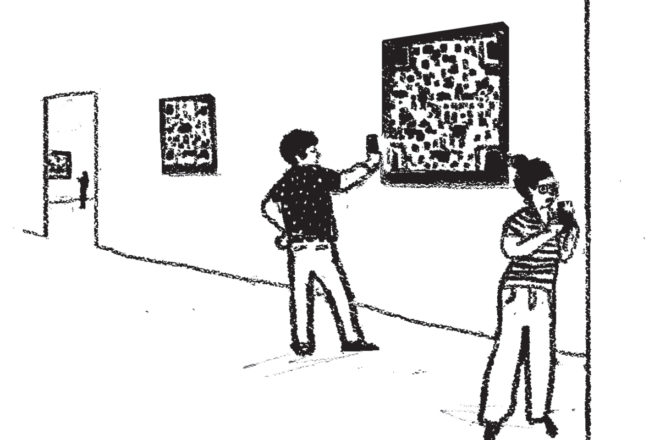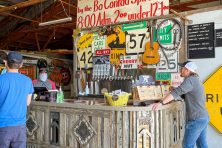QR Codes Are Back, but Are They Here to Stay?
- Share
- Tweet
- Pin
- Share

To reduce paper waste and provide contactless ordering and pickup, some Door County restaurants and other businesses are incorporating QR codes into their services.
You may also have noticed QR codes starting to appear in the pages of the Peninsula Pulse, linking to event calendars, tour schedules and online-exclusive content such as podcast episodes and the daily e-newsletter.
QR codes seem to be popping up everywhere during the past few years, but they’ve been around since 1994 where they were invented to track vehicles during manufacturing. The camera on your smartphone can scan these box-shaped codes – functionally, a type of barcode – and doing so is simpler and more accessible than it used to be because now there’s no need to download an app first. Just open your smartphone’s camera and hover over the code as if you’re going to take a picture of it. An icon for you to tap will appear on your phone screen, leading to the website to which a restaurant or business has linked the code.
QR stands for “quick response,” and speed seems to be one reason for the codes’ recent resurgence. By eliminating long lines for ordering food, QR codes have allowed customers to maintain social distance or simply remain seated outside when an establishment has only a walk-up ordering window.
Bill Andersen at Maxwelton Braes Lodge and MAX bar is emphasizing QR technology this summer, with codes scattered throughout the property and in his advertising. QR codes are posted on the golf course and pickleball courts that link to the restaurant specials and menu, and at pop-up restaurants and food trucks that link to online ordering.
“We can change things quickly, like if we run out of something or want to change the drink special,” Andersen said.
He distributes few paper menus and observes that customers are slowly becoming more familiar and comfortable with QR codes. People seated at tables can scan a code to order drinks or prepay for a fish boil.
“In places like Florida, it’s crazy,” Andersen said. “It’s really gaining traction now. This seems like the easiest way to get information out and manipulate it.”
Maxwelton Braes started using QR codes because of the pandemic, but Andersen sees it as a growing trend that will remain beyond COVID-19.
At the Stabbur bar you’ll find a QR code printed in the center of a goat-shaped cutout. It takes you to a landing page on the Al Johnson’s restaurant website, where a short video plays. Customers can access the restaurant’s menu and hours and find a Snapchat filter with goat ears and a bell collar.
“QR codes save the business money and make it easier for customers to find information,” said Kit Butz, sales and marketing manager at Al Johnson’s, who has observed bigger restaurant chains use QR codes to completely replace their menus. He’s found that older generations are becoming more tech savvy and comfortable with using QR technology and said the goat card rack has been scanned more than 10,000 times.
Bearded Heart started using a QR code when it implemented online ordering. The coffee shop wanted a COVID-19-safe option for customers to order without entering the building and pick up from a window. A QR code posted on the windows links to the website, where customers can read the menu, order and pay.
“It’s convenient if you want to enjoy the weather and not make a stop inside,” said barista Anna Staudenmaier.
Barista Zephyr Ciesar has noticed that only a handful of customers scan the codes posted at the windows and said most people go directly to Bearded Heart’s website to place an order.
“I thought QR codes would take off way more than they have,” Ciesar said.
But J.R. Schoenfeld anticipates they will gain more traction. The Chives owner plans to add QR codes at his food trucks and said they should be available for food ordering and payment within the next few weeks. Schoenfeld hopes they will prove worthwhile for both customers and restaurant staff, allowing patrons to order from outdoor seating.
At DCBC Eats – the barbecue stand at Door County Brewing Co.’s beer garden, which doesn’t take phone or online orders – a QR code replaces paper menus.
“It’s less trash, less upkeep and keeps it simple,” said server Shane Poda. “We don’t need more paper flying around in the beer garden.”
Door County Courier introduced a QR code to its business several months ago. The delivery service posts a code on its website, emails, social media and at various stores to give customers a direct link to its website’s delivery-scheduling page.
Now that the barrier to entry has all but disappeared, the “quick” in “quick response” is more appropriate than ever, and with more restaurants and other businesses finding innovative uses for QR codes, this “old” technology is seeing new life in Door County and well beyond.




